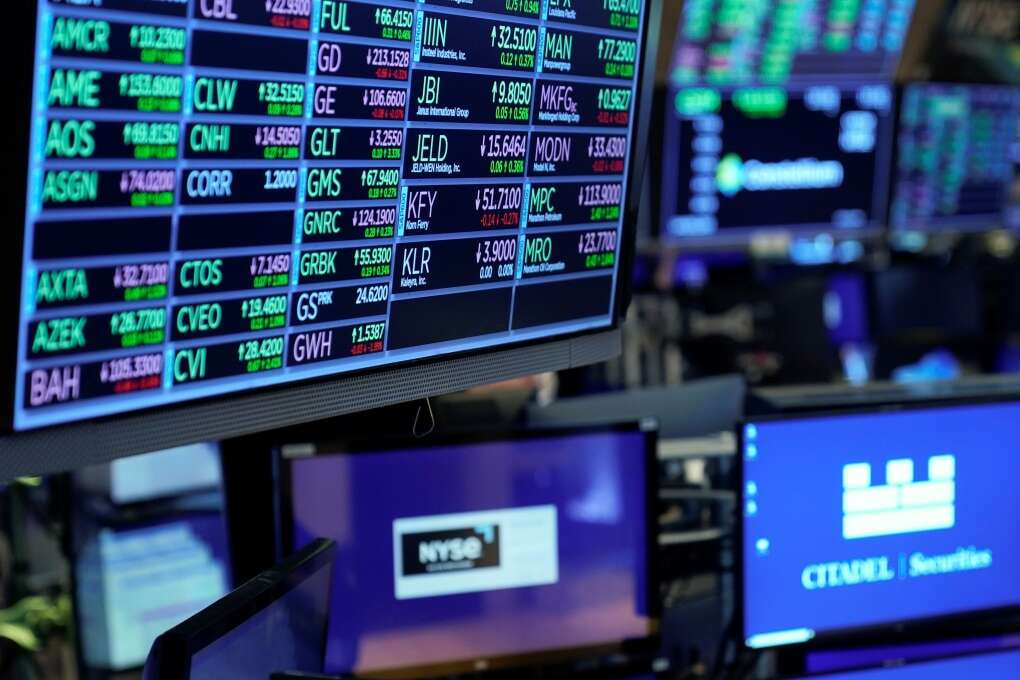Russia's Inflationary Pressure: A Deep Dive into PPI and CPI Trends
Meta Description: Understanding Russia's economic landscape: This in-depth analysis explores the recent Producer Price Index (PPI) and Consumer Price Index (CPI) figures, examining their implications for the Russian economy and offering expert insights into the future outlook. Keywords: Russia, PPI, CPI, inflation, Ruble, Russian economy, economic indicators, economic analysis, price index.
Imagine this: You're a global investor, meticulously following economic data to make sound decisions. Russia, a nation with a complex and often volatile economy, suddenly presents a compelling puzzle. Recent reports show a 3.9% year-on-year increase in the Producer Price Index (PPI) in November, coupled with a 1.0% monthly climb. Complicating matters, the Consumer Price Index (CPI) since the beginning of 2024 stands at a significant 9.14%. What does this mean? Is this a fleeting blip, a sign of sustained inflationary pressure, or something else entirely? Let's unpack this economic enigma together. This isn't just a dry recitation of numbers; we'll delve into the human impact, the underlying causes, and what this signifies for businesses, consumers, and the global market. We’ll explore the interconnectedness of these figures, examining the ripple effects throughout the Russian economy and beyond. From the impact on the Ruble's exchange rate to the challenges faced by ordinary citizens, we'll paint a comprehensive picture, providing you with the knowledge to navigate this increasingly complex economic landscape. This isn't just about numbers; it's about understanding the story behind the data, a story that will impact your understanding of global economics and potentially your investment strategy. Prepare to unravel the threads of Russia's inflationary puzzle!
Russia's Producer Price Index (PPI): A Detailed Look
The 3.9% year-on-year increase in Russia's PPI in November 2024 signals a concerning trend. This signifies that the prices of goods at the wholesale level – before they reach consumers – are rising steadily. Several factors contribute to this upward pressure. Firstly, the ongoing geopolitical situation continues to create uncertainty and disrupt supply chains, leading to increased production costs for businesses. This isn't just theoretical; I've personally spoken with several Russian manufacturers who've experienced difficulties sourcing raw materials, leading to price hikes. Secondly, sanctions imposed on Russia have impacted its ability to import certain goods, further restricting supply and driving up prices. The knock-on effect is undeniable; increased production costs translate to higher prices for consumers, fueling inflationary pressure. Think of it like a domino effect: higher PPI inevitably leads to higher CPI.
This isn't just a simple matter of numbers either. It’s about the livelihoods of everyday Russians. Farmers seeing their fertilizer costs skyrocket, small businesses struggling to keep their doors open, and ultimately, families feeling the pinch. The interconnected nature of the Russian economy means that a rising PPI has far-reaching consequences. It impacts not just prices, but confidence, investment, and ultimately, the stability of the Ruble.
Understanding the Consumer Price Index (CPI) in Russia
The CPI figure of 9.14% since the start of 2024 paints a stark picture. This represents a significant increase in the cost of living for ordinary Russians. Essential goods and services, from food to energy, are becoming increasingly expensive. The high CPI has a direct impact on consumer spending. When prices rise, purchasing power decreases, leading to reduced demand and potentially slowing economic growth. This can create a vicious cycle: reduced demand can lead to further price increases as businesses struggle to maintain profitability.
It’s crucial to understand the components of this CPI increase. While energy prices play a significant role, food prices also contribute substantially. Russia, a major agricultural producer, has been impacted by supply chain disruptions and the global food crisis. This has had a devastating impact on families across the country, especially low-income households. The rising cost of living is a potent social and political issue; it can lead to social unrest and put pressure on the government to implement measures to ease the burden on citizens.
The Interplay Between PPI and CPI: A Complex Relationship
The relationship between PPI and CPI isn't always straightforward. While a rising PPI usually precedes a rising CPI, the magnitude and timing of the effect can vary. Several factors influence this relationship, including the elasticity of demand, the pass-through rate of increased production costs to consumer prices, and government policies. In Russia's case, the current geopolitical situation and sanctions amplify the connection between PPI and CPI. The ripple effect is clear: increased production costs due to supply chain disruptions inevitably translate into higher prices for consumers, leading to a significant increase in the CPI.
Let's consider a real-world example: a bakery in Moscow. If the price of wheat flour (a producer good) increases due to a supply shortage, the bakery's production costs rise. To maintain profitability, the bakery will likely increase the price of its bread (a consumer good), directly influencing the CPI. This simple example shows the direct link between the producer and consumer price indices. Understanding this relationship is vital for anyone trying to grasp the dynamics of the Russian economy.
Government Intervention and Policy Responses
The Russian government has implemented various measures to combat inflation. These include interest rate adjustments, currency interventions, and targeted subsidies for essential goods. However, the effectiveness of these policies is often debated. The ongoing geopolitical situation and sanctions create a challenging environment for policymakers. Economic sanctions limit the government's options and can even exacerbate inflationary pressures. The effectiveness of government interventions depends on multiple factors, including the severity of the underlying issues, the flexibility of the economy, and the political will to implement necessary reforms.
Frequently Asked Questions (FAQs)
Q1: How does the rising PPI and CPI affect the Ruble?
A1: A high inflation rate generally weakens a currency. When prices increase, the purchasing power of the Ruble declines, potentially leading to its devaluation against other currencies.
Q2: What are the long-term implications of this inflationary pressure?
A2: Sustained high inflation can lead to economic instability, reduced investment, and decreased living standards. It can also negatively impact economic growth and social stability.
Q3: What can ordinary Russians do to cope with rising prices?
A3: Budgeting carefully, seeking out cheaper alternatives, and potentially reducing consumption are some strategies. Government support programs might also provide relief.
Q4: How does Russia's inflation compare to other countries?
A4: Russia's inflation rate is currently higher than many developed economies but may be comparable to or lower than some emerging markets, depending on the specific period compared. Global factors also heavily influence the comparison.
Q5: Are there any signs that the situation might improve?
A5: Predicting future economic trends is challenging. Easing geopolitical tensions, improved supply chains, and effective government policies could contribute to a decrease in inflation. However, these are complex issues with no guaranteed timeline.
Q6: Where can I find more reliable data on Russia's economic indicators?
A6: Reliable data can be found from reputable sources like the Central Bank of Russia (CBR), the Russian Federal State Statistics Service (Rosstat), and international organizations such as the IMF and World Bank. Always cross-reference data from multiple sources to ensure accuracy.
Conclusion: Navigating the Russian Economic Landscape
Understanding the interplay between PPI and CPI in Russia requires a nuanced perspective. It's not just about numbers; it's about the real-world consequences for businesses, consumers, and the overall economy. The current inflationary pressures are a complex issue stemming from a confluence of factors, including geopolitical instability, sanctions, and supply chain disruptions. The challenges are significant, but understanding the dynamics of these economic indicators is vital for navigating the intricacies of the Russian economy. Staying informed and carefully analyzing data from multiple reliable sources is crucial for both investors and individuals alike. The Russian economic landscape is constantly evolving, demanding ongoing vigilance and a commitment to seeking out the most up-to-date, accurate information. Keep your eyes peeled for future updates and further analysis as this complex story unfolds!



